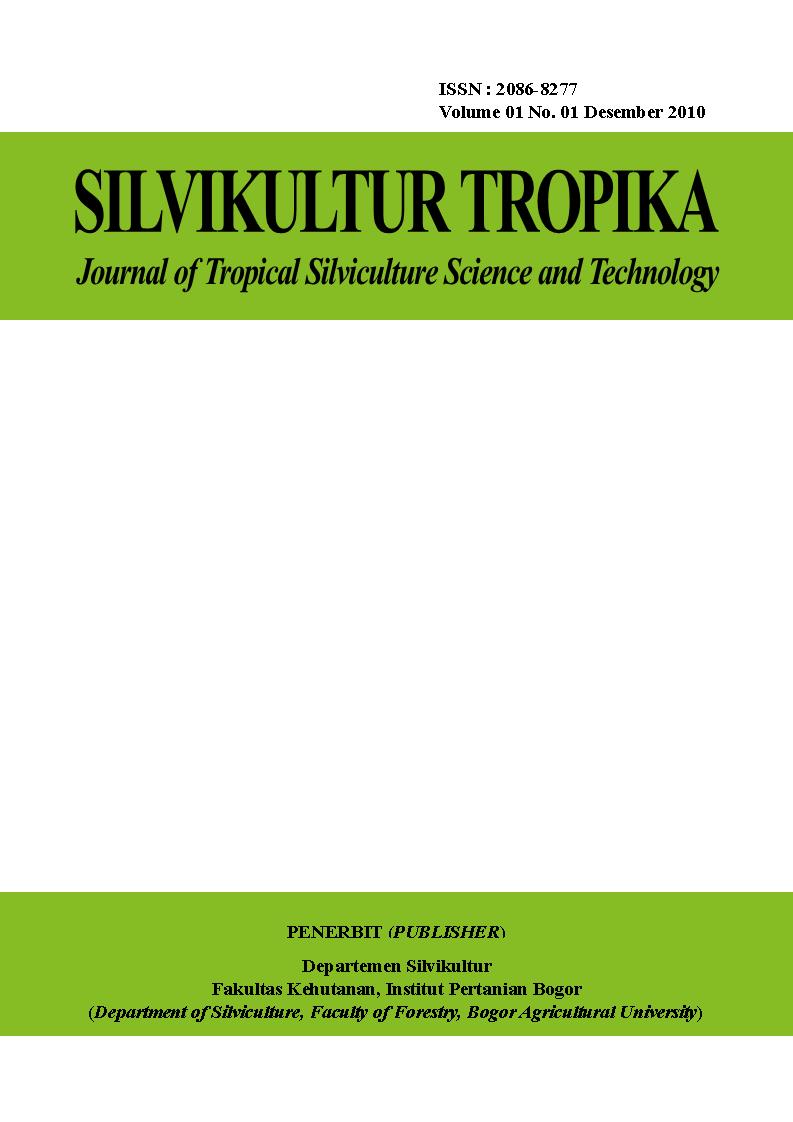-
Nurheni Wijayanto
Institut Pertanian Bogor
-
Mokhamad Rifa’i
Institut Pertanian Bogor
Abstract
Combination of cultivated plants conducted in RHLP program in Cikanyere village enable for differences response occurrence to main plant growth. The purpose of this research is to examine the main plant growth of Gmelina arborea Roxb. in several agroforestry patterns in Cikanyere Village, Sukaresmi District, Cianjur Regency. Main plant growth parameters (height, diameter and crown projection) measured in the census in each agroforestry patterns. Physical and chemical soil analyzed from each agroforetsri patterns in the laboratory. Traced the history of land management by conducting interviews with managers of farmers each selected agroforestry patterns. The data obtained were analyzed descriptively. Agroforestry pattern wasa developed by the farmers is AF 1 (Gmelina, corn, cassava, banana), AF 2 (Gmelina, corn, coffee, bananas), AF 3 (Gmelina, mahogany, cassava, petai), AF 4 (Gmelina, mahogany, corn, chili peppers) and AF 5 (Gmelina, mahogany, dry land rice, cassava, corn). The pattern of AF 3 has the lowest of growth, while the pattern of AF 1 and AF 4 showed the most growth compared with other patterns. The pattern of AF 3 have small LCR and LAI, while the pattern of AF 1 and AF 4 have the largest LCR and LAI so that photosynthesis function optimal and main plant growth are better than the other patterns. The phosphorus (P) on the pattern of AF 3 suspected to be a limiting factor for plant growth gmelina. P and K needed cassava plants in sufficient numbers to form the root and tuber enlargement so that suspected as the cause of the low content of P elements in AF 3 pattern. Basic plant growth G.arborea Roxb. influenced by the interaction between components and land management systems that do farmers in each agroforestry patterns.










